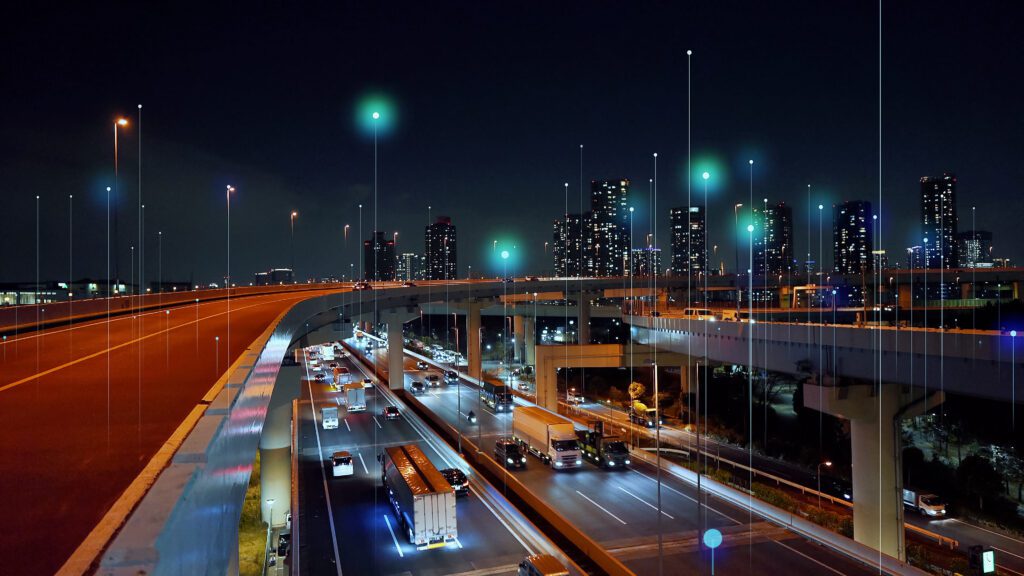Italian Cargo Crime
First published: October 2022

Danny Ramon
Intelligence & Response Manager
Italy holds a unique position in the European supply chain and logistics network. As the third largest economy in the EU it has a large domestic market with a strong demand for luxury goods, an important manufacturing sector, and is a major link in global logistics thanks to its container ports and its position as a gateway to Europe. It is also a country with security challenges less common in the rest of Europe, a heavy reliance on trucking for the transportation of goods, powerful and ingrained organised crime networks, and prolific number of armed and often violent hijackings.
This blend of both opportunities and threats sets Italy apart as a unique case when considering the risk landscape of European logistics.
Transport Links
The movement of goods across Italy is dominated by the trucking industry, with a national fleet of close to one million medium and heavy goods vehicles and over four million commercial vehicles on Italian roads on any given day. This is in part due to a lack of investment in rail transportation, meaning only around 10% of Italian cargo is moved by rail.
Although significant investment of €160 billion in rail infrastructure is planned over the next decade, it will be years before it has a significant impact on
road transportation. Italy has a number of important ports. Trieste in the extreme Northeast of the country is the largest, handling around 63 million tons of cargo per annum, followed by Genoa at around 55 million tons. Greater investment had been agreed for the ports of Genoa and Trieste in 2019 when Italy signed a memorandum of understanding to join the Chinese Belt and Road Initiative. However, following changes in domestic politics and a closer realignment with the U.S. under Mario Draghi, these developments have failed to materialise. In
the South, the Port of Gioia Tauro is Italy’s fifth largest port and closest to the Suez – Gibraltar route, making it an important trans-shipment hub and Italy’s largest in terms of container traffic. Gioia Tauro is also known to be a major smuggling hub, which has inhibited its development relative to other Italian ports.
Italy is dominated by the trucking industry with a national fleet of close to
1 million
medium and heavy goods vehicles
4 million
commercial vehicles on Italian roads on any given day
Trieste is the largest trucking hub, handling around
63 million
tons of cargo per annum
Armed Robberies
Cargo theft in Italy is notable for the prevalence of sophisticated, well-executed and violent hijackings, with several hundred such robberies taking place each
year. The speed and precision characteristic of these robberies indicates a high degree of experience and planning by criminal groups, allowing them to hijack
and empty a truck then make their escape within around six-eight minutes – very often before police can mount a response. The threat or use of violence – particularly in cash-in-transit robberies – is common, and drivers or guards are often injured or even killed.
Even if there are no injuries some robberies are extremely violent and inventive. During an incident in 2019 an armoured cash truck was robbed outside of
Bari, Puglia by men armed with automatic weapons. The perpetrators blocked the target truck with two lorries that they then set on fire, firing their weapons
to intimidate the guards. They then used two stolen construction diggers to rip open the armoured truck and steal the cash before escaping in two waiting cars. Incredibly, no guards were injured.
As well as violent, hijackings in Italy are also sophisticated. In addition to being well planned and executed, with cargoes specifically targeted, hijacking locations meticulously chosen and escape routes carefully planned, criminals also make use of new technologies. As far back as 2015 one source reported that 100% of the hijackings in Puglia made use of jamming equipment to prevent alerts being raised or the target truck being tracked while they are unloaded. Despite this jamming, the majority of abandoned hijacked trucks fitted with GPS tracking are later found and recovered – albeit without their cargo.
Cargo theft in Italy is notable for the prevalence of sophisticated, well-executed and violent hijackings, with several hundred such robberies taking place each year.
- Danny Ramon
Due to the precision with which many robberies are carried out the level of insider involvement is believed to be high. The criminals’ ability to target specific cargoes, block roads, empty trucks and escape would not be possible without the collusion of at least one driver, dispatcher or similar feeding information to the robbers. Such collusion could be motivated by a number of reasons, but if mafia tactics for smuggling at ports is a guide, intimidation of workers and threats to their families are likely a factor. While drivers are often assaulted and kidnapped for the duration of the crime, some doubt has been cast over the nature of their injuries – which in some cases appear to be inflicted more for the driver’s credibility as a victim than to subdue them – although this is not itself proof of collusion.
While hijackings take place across Italy, the areas with the highest risk are the rugged and mountainous southern regions of Calabria, Puglia and Campania – especially around Naples, although criminals from these areas increasingly operate in the northern industrial region of Lombardy around Milan. Cargo crime in these
southern areas takes place against a background of a long history of organised crime groups (OCG) or mafias, including the Sacra Corona Unita of Puglia, Camorra of Campania, ‘Ndrangheta of Calabria and well-known
Cosa Nostra of Sicily. While these organisations are generally assumed to be involved in the execution of cargo thefts the links between the mafias and armed robbers are not so clear. OCG involvement in cargo theft is thought to be more in the movement of stolen goods, making use of their international links, rather than in the direct planning and execution of robberies. Despite this disconnect, the involvement of OCG in many aspects of life in southern Italy likely facilitates the level of criminality and cargo robberies.
Cargo At Risk
Cash, tobacco, food and beverage products and pharmaceuticals are currently the most targeted cargoes. The proportions shift year on year, but these products remain popular for a number of reasons. While cash is obvious in its appeal, tobacco and food products are easily moved and sold on for a high proportion of their retail value and are difficult to trace by law enforcement. Pharmaceuticals, which are a significant part of the Italian manufacturing economy, are targeted primarily so they can be exported to countries where, unlike in the
Italian healthcare system, drugs must be paid for, and so demand for cheaper medicines is high.
Unsurprisingly given Italy’s importance in their supply chain, luxury and designer goods are also a common target for theft.
These categories are far from exhaustive, and in parts of southern Italy like Puglia all cargoes should be regarded as being at high risk of theft. Incidents
of fuel theft, although far less common due to the difficulty in transferring the load, have been reported in 2022 and could increase given the current global demand driving up energy prices. Extremely high value cargos, such as bullion or diamond transports, that warrant a police escort are seldom, if ever targeted.
Organized Crime at Ports
Italy’s position as a hub for trans-mediterranean shipping along with the presence of OCGs means that smuggling is present in all major ports. Most prevalent of these OCGs is the Calabrian-originated ‘Ndrangheta, which is intimately linked to the global cocaine trafficking system and has a presence in many major ports around the world, particularly in Europe.
The ‘Ndrangheta are reported to be active in the ports of their native Calabria, especially in the important hub of Gioia Tauro, as well as having a presence in Naples, Venice, Trieste and across Liguria. This presence allows them to conduct their primary business of cocaine smuggling, with corresponding threats to
cargo integrity and corruption of port officials. Thanks to sophisticated smuggling techniques many tons of cocaine and heroin are believed to enter through
Italian ports each year, with 1.5 tons of cocaine seized and a 286% increase in heroin reported in 2018.
Smuggling is also common to export stolen or counterfeit goods to external markets. While traditional Italian OCGs are believed to be involved in these operations, Chinese OCGs are also known to be closely involved in the export of counterfeit goods and have a presence in many Italian ports.
What Does the Future Hold and What Can Be Done?
Like many countries, Italy is facing increased costs in the price of living and a slowing economy. Given the preexisting proficiency of the country’s criminals in armed hijackings it is highly likely that essential commodities such as food will be at an even higher risk of theft, particularly in the Southern regions of the country. This heightened threat also applies to pharmaceuticals, as citizens in countries with less generous healthcare policies seek to reduce costs further with illicitly obtained medicines. While fuel has not been a common target for hijackings, such thefts do occur and could increase if energy prices remain high due to the war in Ukraine and other market forces.
Pro-active intelligence and greater visibility of cargo through the use of technology are the obvious necessary measures to counter the hijacking threat, along with better cooperation with police to improve the response to hijacking incidents. Given the suspected high-level of insider threat facilitating the majority of hijackings, greater care is needed in staff recruitment, background checks and training to understand and counter the threat of collusion between hijackers and warehouse and production staff.





